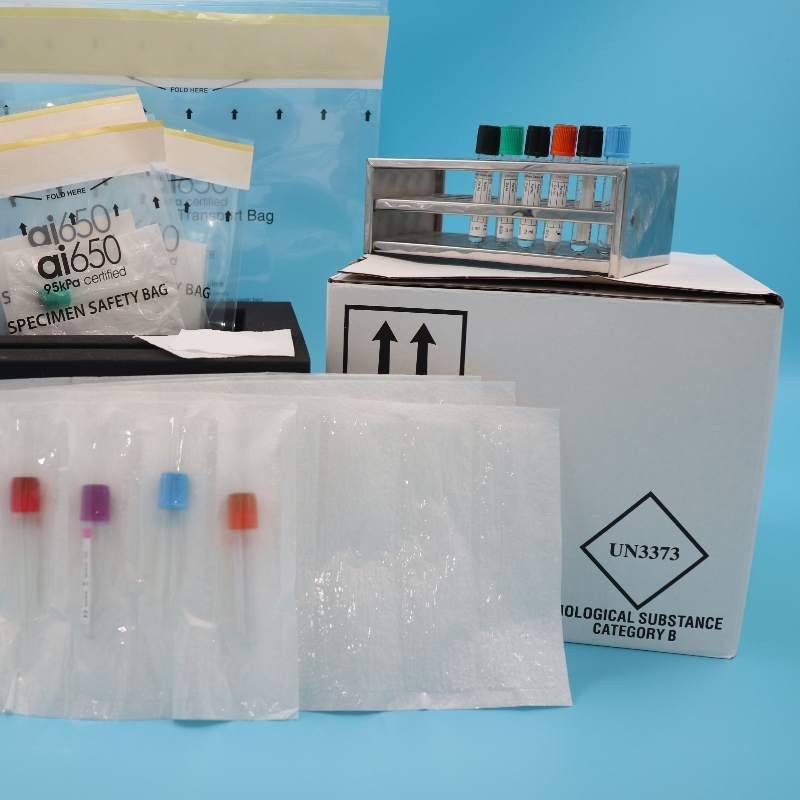Transporting specimens, especially biological ones like blood, urine, tissues, or swabs, is a critical process in medical, research, and laboratory environments. Proper packaging ensures the specimen remains uncontaminated, maintains its integrity for accurate testing, and protects handlers from potential exposure to hazardous materials. The type of bag used for this purpose is pivotal in meeting these requirements. This article explores the standard bags used for specimen transport, focusing on their features, regulatory compliance, and why they are the preferred choice.
Types of Bags Used for Specimen Transport
Biohazard Specimen Transport Bags
The most commonly used bags for transporting biological specimens are biohazard specimen transport bags. These are specifically engineered to meet the stringent safety and regulatory requirements of medical and laboratory settings. Below are their key features and benefits:
- Sealable and Leak-Proof Construction: Made from durable materials, typically 2 mil thick low-density polyethylene (LDPE), these bags prevent leaks or spills, which is essential for containing liquids like blood or urine. This ensures no hazardous materials escape during transport, protecting both the specimen and handlers (Harmony Lab & Safety Supplies).
- Biohazard Symbol: A bright red and black biohazard symbol is printed on the bag, meeting Occupational Safety and Health Administration (OSHA) specifications. This clear marking alerts handlers to the potentially infectious contents, enhancing safety (OSHA Bloodborne Pathogens).
- Zipper Closure: Most biohazard bags feature a zipper closure, allowing repeated access while maintaining a secure seal. This is particularly useful in laboratories where specimens may need to be accessed multiple times during processing.
- Document Pouch: Many bags include a separate pouch or flap for storing paperwork, such as requisition forms or labels. This isolates documents from the specimen, reducing the risk of contamination
- Absorbent Pads: Some bags come with built-in absorbent pads to manage potential leaks, adding an extra layer of safety for liquid specimens (Globe Scientific).
- Regulatory Compliance: These bags adhere to guidelines from the National Committee for Clinical Laboratory Standards (NCCLS) for secondary containment. They are often FDA-registered and 510(k) exempt, ensuring they meet industry standards for safe transport.
Biohazard specimen transport bags are widely used in hospitals, clinics, and reference laboratories for transporting blood tubes, urine containers, surgical pathology samples, and other biological materials. Their design ensures specimens are protected from external contamination while safeguarding handlers from exposure to infectious substances.
Specialized Bags and Containers
While biohazard specimen transport bags are the standard for most biological specimens, other options exist for specific purposes:
- Chemotherapy Drug Transport Bags: These are designed for transporting chemotherapy drugs, which require additional safety features due to their hazardous nature. They may include enhanced sealing mechanisms or materials to handle the unique risks associated with these substances (Interplas).
- General Laboratory Bags: For non-biological specimens, such as chemical or environmental samples, unprinted laboratory bags may be used. These lack biohazard-specific features and are not suitable for biological specimens.
- Plastic Containers with Fitted Lids: In some cases, rigid plastic containers with fitted lids are used as secondary packaging, particularly for larger or more complex specimens. These are also labeled with a biohazard symbol and must be leak-proof (USC EHS).
For general biological specimen transport, biohazard specimen transport bags remain the most practical and compliant option due to their versatility and safety features.
STAT Bags for Urgent Specimens
In medical settings, specimens requiring immediate attention, known as STAT specimens, are transported in specially marked bags. These are often red or purple biohazard bags labeled as “STAT” to ensure laboratory staff prioritize their processing. Using these bags helps prevent delays in critical testing (UCSF Clinical Laboratories).
Regulatory Guidelines for Specimen Transport
Transporting biological specimens is subject to strict regulations to ensure safety and prevent the spread of infectious diseases. Key regulatory bodies include:
- Centers for Disease Control and Prevention (CDC): The CDC provides detailed guidelines for packing and shipping infectious substances, including biological specimens. Specimens must be placed in leak-proof primary containers, which are then enclosed in secondary packaging, such as a sealable plastic bag, to contain potential leaks (CDC Specimen Guidelines).
- Department of Transportation (DOT): Under 49 CFR Part 173.134, the DOT regulates the transport of hazardous materials, including biological substances. This includes requirements for proper packaging, labeling, and handling (UC Davis Safety Services).
- International Air Transport Association (IATA): IATA sets standards for air transport of dangerous goods, including infectious substances, ensuring compliance with international shipping requirements (IATA Dangerous Goods Regulations).
These regulations emphasize the use of appropriate packaging, such as biohazard specimen transport bags, to ensure safe and compliant transport. For example, the University of Iowa specifies that specimens should be transported in “tightly sealed, leak-proof containers and transported in sealable, leak-proof plastic bags” (UIowa Microbiology Guidelines).
Packaging Requirements for Different Specimen Types
The following table summarizes the packaging requirements for biological specimens based on temperature needs, as outlined by the CDC:
| Specimen Type | Temperature Range | Packaging Requirements | Additional Materials |
| Frozen | <-20°C, <-70°C | Leak-proof primary receptacle, secondary packaging, Styrofoam cooler, rigid outer packaging | Dry ice (5-10 lbs), absorbent materials, cushioning |
| Refrigerated | 2-8°C | Leak-proof primary receptacle, secondary packaging, Styrofoam cooler, rigid outer packaging | Cold packs, absorbent materials, cushioning |
| Room-Temperature | 15-25°C | Leak-proof primary receptacle, secondary packaging, rigid outer packaging | Room-temperature cold packs, absorbent materials |
| Ambient | Equal to surroundings | Leak-proof primary receptacle, secondary packaging, rigid outer packaging | Absorbent materials, cushioning |
Biohazard specimen transport bags often serve as the secondary packaging in these configurations, ensuring compliance with regulatory standards.



